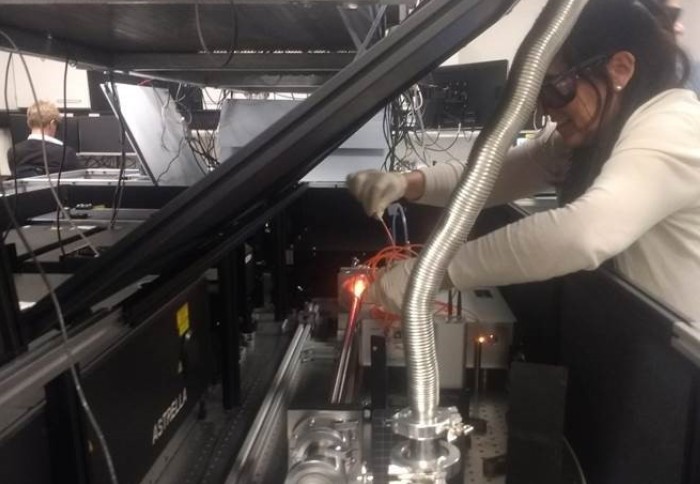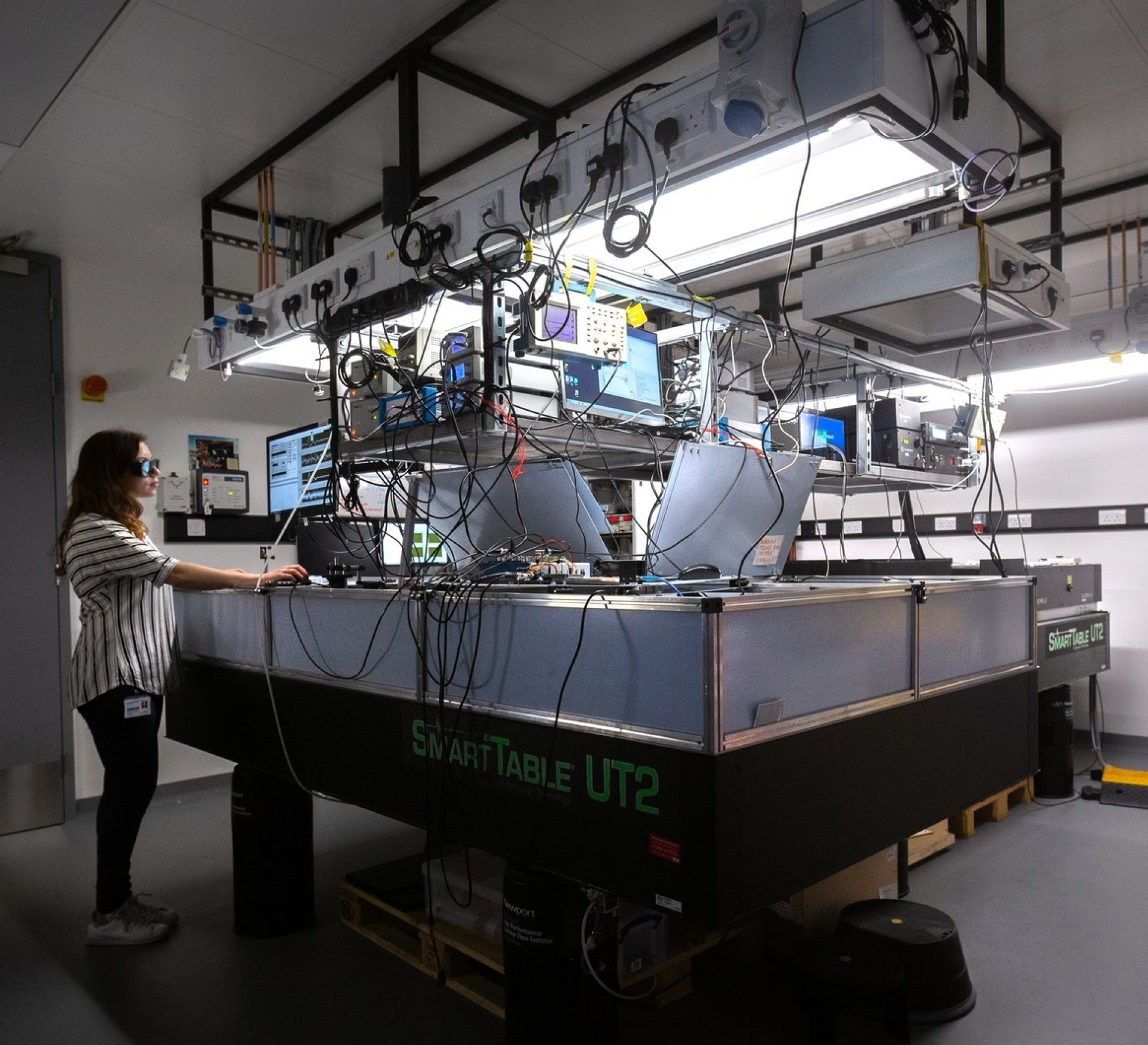Tracking electrons in solar cells shows even faster reactions than thought

Chemists and physicists have collaborated to use ultrafast lasers to probe the first fractions of a second after light is absorbed by solar cells.
The result could help researchers understand and optimise light-harvesting materials including new infrared photodetectors.
When a large organic conjugated molecule, for example an organic dye or a molecular semiconductor, absorbs light, one of the electrons receives energy and is delocalized along the molecule. Imperial researchers have shown that this electron acquires its properties on extremely fast timescales of less than 10 femtoseconds (fs, 10-15s).
The result is reported in the journal Nature Communications. This work is a result of a collaboration between the group of Dr Artem Bakulin in the Department of Chemistry and the groups of Professor John Tisch and Professor Jenny Nelson in the Department of Physics.
Getting the right tools
Dr Bakulin’s group uses laser tools to investigate the properties of organic semiconductors in electronic devices like new types of solar cells or light-emitting diodes. As the very first processes following conversion of light to electron motion can be as fast as 0.00000000000001s, the experimental equipment (laser analogue of a photo camera) should be able to collect information on a similar timescale to resolve these processes.

For this, the group of Professor Tisch developed a pulsed laser source in which the laser pulse duration is less than 8fs. Using such ultrafast laser pulses, the researchers measured the photocurrent and photoluminescence in organic semiconductor solar cells under working conditions and selectively tracked specific electron dynamics affecting the efficiency of the device.
The group of Professor Nelson then performed molecular scale modeling of electronic motions to interpret the outcome of the laser experiments.
Surprisingly fast
Many previous studies have observed that, very soon after photoexcitation of the molecule, electrons become bound to the molecule – this is known as formation of an exciton state. The Imperial team was the first to resolve in time how fast this process actually occurs, finding it to be on unexpectedly short sub-10 fs timescales.
Surprisingly, this ultrafast timescale suggests that the change in the shape of the molecule has little effect on exciton formation, contrary to the general paradigm introduced about 30 years ago.
The developed technique and the results of this study are of great interest to synthetic, device chemists and other scientists working on optoelectronic applications. Further steps will involve applying the developed methodology to new infrared absorbing materials with potential applications in photodetectors, high-efficiency solar cells, and solar fuels.
Exciting new results
Dr Bakulin said: “This study was a milestone work for my group as we managed to combine frontier laser technology and modelling with the new spectroscopy approaches my group is developing. We can’t wait to apply this new expertise to study new materials for infrared photodetectors.”
Professor Tisch said: “I am thrilled by the success of this joint Chemistry-Physics project. The collaboration between my laser team (Daniel Walke and Allan Pettipher) and Artem’s group was supported by EPSRC Impact Acceleration, and Industrial Strategy Challenge funding, which aided the development of the ultrashort pulse laser technology that we set up in Artem’s lab.
“The exciting new results we obtained confirm the adage that if you can make the optical pulses shorter in your experiment (in this case, below 10 fs), you are likely to make new scientific discoveries. I am very excited to continue the collaboration going forwards.”
-
‘Sub-10-fs observation of bound exciton formation in organic optoelectronic devices’ by Marios Maimaris et al is published in Nature Communications.
Article supporters
Article text (excluding photos or graphics) © Imperial College London.
Photos and graphics subject to third party copyright used with permission or © Imperial College London.
Reporter
MARIOS Maimaris
Department of Chemistry
Artem Bakulin
Department of Chemistry
Hayley Dunning
Communications Division